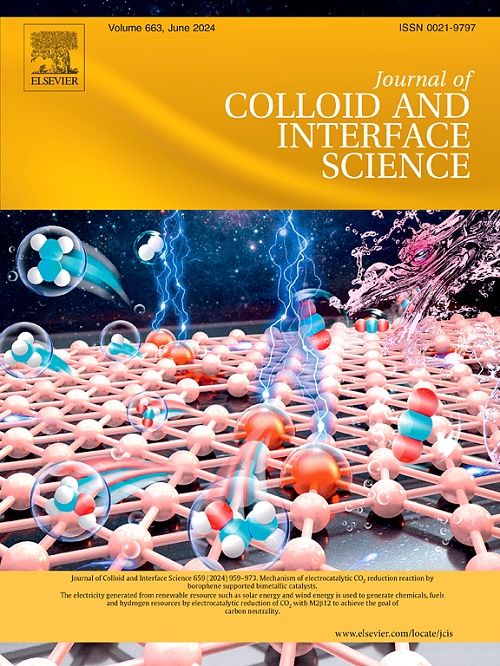Phase-engineered CoP-Co2P/coal-based carbon fibers composite as self-supporting electrocatalyst for efficient overall water splitting
IF 9.4
1区 化学
Q1 CHEMISTRY, PHYSICAL
引用次数: 0
Abstract
The development of highly efficient electrocatalysts is critical to advancing overall water splitting (OWS). Herein, a self-supporting composite electrocatalyst based on CoP-Co2P/coal-based carbon fibers (CoP-Co2P/C-CFs) is successfully fabricated through phase-engineering. The formation mechanism of precursors is investigated, enabling precise modification of CoP and Co2P composite phases. This phase-engineering minimizes the Gibbs free energy of hydrogen adsorption, thereby enhancing OWS performance. In addition, the specific active sites involved in the OWS reaction are examined to confirm the effectiveness of phase modulation on CoP and Co2P. Furthermore, C-CFs derived from coal exhibit self-supporting properties as well as good acid and alkaline resistances, making them a promising potential candidate for OWS. A two-electrode cell assembled using CoP-Co2P/C-CFs exhibits a low voltage of 1.60 V at 10 mA cm−2 for OWS, superior to 1.64 V obtained using Pt/C//RuO2. This study not only presents a reliable strategy for obtaining phase-engineered cobalt phosphide catalysts but also outlines a novel approach for coal into high-value-added CFs. Consequently, it offers a new perspective for the development of self-supporting electrocatalysts for OWS.

求助全文
约1分钟内获得全文
求助全文
来源期刊
CiteScore
16.10
自引率
7.10%
发文量
2568
审稿时长
2 months
期刊介绍:
The Journal of Colloid and Interface Science publishes original research findings on the fundamental principles of colloid and interface science, as well as innovative applications in various fields. The criteria for publication include impact, quality, novelty, and originality.
Emphasis:
The journal emphasizes fundamental scientific innovation within the following categories:
A.Colloidal Materials and Nanomaterials
B.Soft Colloidal and Self-Assembly Systems
C.Adsorption, Catalysis, and Electrochemistry
D.Interfacial Processes, Capillarity, and Wetting
E.Biomaterials and Nanomedicine
F.Energy Conversion and Storage, and Environmental Technologies

 求助内容:
求助内容: 应助结果提醒方式:
应助结果提醒方式:


